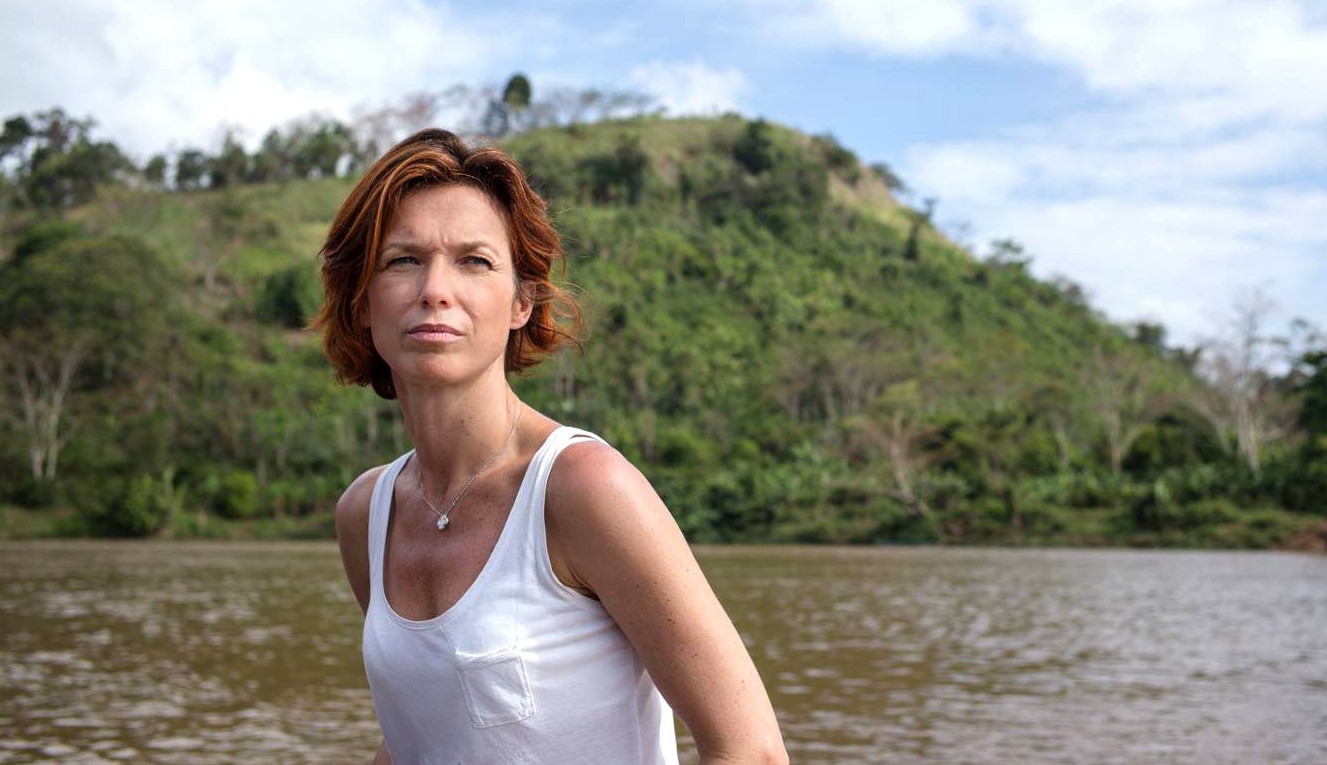FRENCH PERFUMER EMILIE COPPERMANN had her career ambitions sorted out before most people learn how to read. “When I was eight years old, I could spend the whole weekend doing perfumery, getting samples and mixing them,” she says. “I was really crazy about fragrances.” But it was at 13, when she met her first perfumer, that her destiny was cemented. “It didn’t even occur to me until then that there was a job doing that,” she says. “When he talked about what he was doing, I said, ‘Okay, this is what I want to do. This is my job.’”
It’s a profession that has taken her around the world and back. This particular week, she and four other colleagues from Symrise, the flavor and fragrance company for which they work, are deep in the jungles of northern Madagascar, finding inspiration for new fragrances by visiting local farmers who grow vanilla, cocoa, rose pepper, and vetiver. “This is priceless. All this smell!” she enthuses, as she bounds out of an SUV, jumping over muddy trenches to reach out for a cluster of coffee flowers still on the branch. “I love thinking that when we come back, we [will] have so many new ideas. Everything is a source of inspiration. I’m sure that I will come back to Paris, and I will create a fragrance about the coffee flower.”
When she does, it’s virtually guaranteed to be a stocking stuffer. Coppermann’s name means little to the average consumer, but among her peers she’s a star. After winning her first fragrance, L’Eau de Sonia Rykiel, at 27, she has been on a steady track of producing fine fragrances for Givenchy, Carolina Herrera, Burberry, and Balmain – just to name a few of her high-profile clients — for the past two decades.
Yet, like most other perfumers, her name appears nowhere on the bottle itself, and that’s just fine with her. “I think if you want to be a good perfumer, you need to have no ego at all,” she says. ”The customers are the ones who decide what they like and what they don’t. You have to understand that you’re here just to write the story of a brand.” The same applies when you’re “the nose” of a celebrity. Coppermann created Velvet Hour for Kate Moss in 2007. “I was the happiest woman in the world,” she says about their collaboration. “I feel happy when people like my fragrance and wear it. If it helps, in selling it, to say it’s a particular brand and not Emilie Coppermann, I don’t give a s**t,” she laughs, adding that there is a very tangible upside for a perfumer not to be associated with one particular product. “If you have your name on a brand, you’re not allowed to work for any other brands,” she explains. “So what is fun in our job is I work a lot for Paco Rabanne, Caroline Herrera, and if some of them start to say ‘Emilie Coppermann,’ then it’s going to be a problem if I want to work for Van Clef or Balmain. So it’s better they don’t know me.”
But like in any creative field, professional recognition is vital. “It’s like an artist who needs to sell a picture: if you have a name, then it’s much easier to convince the people you have in front of you that it’s the right fragrance,” she says. An average client looking to launch a new product could receive as many as 40 pitches from competing perfumers, so Coppermann knows she needs to stand out, but also accept that every project is hers to lose. “You need to feel like, okay, I’m going to work it for fun,” she says. “It doesn’t matter if I lose it. It doesn’t mean that I’m not good. It didn’t work at that time.”
Talking to the bubbly Parisian redhead, as she modestly recounts the milestones of her career, you could easily dismiss her impressive trajectory as one lucky break after another. But that’s just Coppermann’s easy demeanor. Behind her fine fragrances is years of hard work, learning the craft from the best in the industry, and finding her conviction. The fact that she also happens to be really fun company is an added bonus.
‘You can be a woman and a famous perfumer.’”
She learned early on that in the perfume industry, personality is everything. Since her entry into perfumery school, Coppermann trained with renowned perfumers Bertrand Duchaufour, Jean-Claude Ellena, and Dominique Ropion, all who had very strong – and very different – dispositions. “With all the people that I met, and these famous perfumers that I worked with, I learned that you need to have your personality, you need to be strong in what you think, and a hard worker,” she says. “I think the most important thing is that you have to be sure of what you do. It’s because you’re convinced that you will convince the person in front of you.”
Coppermann loves a challenge, and it’s not uncommon for her to work on up to 20 projects simultaneously. She lights up when describing the brief for the perfume Floriental, which Comme des Garçons launched this summer. “The brief was: It’s going to be called Floriental but I want no flower. No vanilla,” she recalls. “Okay. Let’s start. What do we do?” The end result was a combination of pink pepper, plum, incense, sandalwood, and the Cistus flower – a flower with no scent. “I love this kind of product,” she says: “I developed, more than ten years ago, a fragrance for Lalique – Eau de Lalique – and it was supposed to be a fresh cologne for women. I started with very masculine, spicy woody [notes] like nutmeg, cinnamon, and cedar wood, and made it more feminine, more fresh. And at the end, it was a cologne, but with a strong character. You need to work in a different way sometimes to get new ideas and to be different.”
Coppermann started her career when the field was not only staggeringly male-dominated, but nepotistic as well; the profession usually passed down from father to son. Luckily, gender plays a much smaller role for future generations of perfumers, as women in the past 20 years have become almost an equal force in the industry. Yet Coppermann occasionally feels that old roles linger. “I think if you’re a man, you have more credibility,” she muses. That being said, throughout perfume history, there were still a few prominent women in the field for her to look up to. “Germaine Cellier was a perfumer in the ’50s. I call her the Simone de Beauvoir of perfumery. She did Bandit, Vent Vert for Balmain – some really famous perfumes at that time,” she says. “She used to work two hours — between 10 a.m. and 12. She drank. She smoked. She was very feminist. I think she’s the one who really changed [perception]. And after that, it was Sophia Grojsman in the ’70s, ’80s. She’s really a self-made woman, a very strong personality. So there are women who really became stars, and then opened our eyes and said, ‘You can be a woman and a famous perfumer.’”
Coppermann herself has embraced her inner Cellier in recent years, making sure she is just as assertive as her male colleagues when presenting her fragrances. Her message to other women: Stop apologizing. “I remember when I turned 40 years old. When I was 38, 39, I was like, ‘I don’t want to be 40.’ And then I said, ‘Okay, I’m 40 years old. Now, I don’t apologize anymore’. And it gives you self-assurance. So I don’t have the age any more to apologize and say, ‘I should change. If something’s wrong, it might be my fault,’ or whatever. No, not anymore.” With a new scent from Givenchy coming out this spring, and memories from Madagascar guaranteed to produce new hits, there’s nothing to be sorry about.
Carita Rizzo has two passports and is not afraid to use them. The Finnish-American writer has lived in five countries before settling down in Los Angeles, from where she’s traveled to more than a dozen others. Carita is a freelance writer who has covered entertainment for InStyle, Us Weekly, and Variety, gone gorilla-trekking for The Washington Post, and explored women’s issues for Glamour and Marie Claire. Follow her on Twitter and Instagram.
All photos provided courtesy of photographer Alex Bonnemaison. View more of his work here.



















